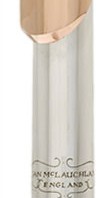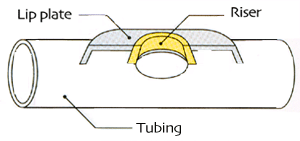ian mclauchlan
-
Ian McLauchlan’s Guide To Making A Headjoint: Finishing the Headjoint
Probably the most important stage of making a headjoint is cutting the embouchure hole. It is this that really makes it work or not.
-
Ian McLauchlan’s Guide To Making A Headjoint: The Riser
In my first two articles in this series I talked about how I make a headjoint tube and lip-plate. This article covers the riser: a part that you don’t really see but that is an important part of the headjoint. The riser (also called the chimney, or by some American flutemakers, the ‘wall’) gives the…
-
Ian McLauchlan’s Guide To Making A Headjoint: The Lip-Plate
In part 1 of this guide, I explained how tubes for handmade flute headjoints are made. In this article, I’ll talk about the method I use to make a lip-plate.
-
Ian McLauchlan’s Guide to Making A Headjoint
What I am intending to do over my next few blog posts is to describe the process involved in producing a headjoint from tubes and sheet, through to the final finished product. I am not for one moment suggesting that this is the only way of making a headjoint, but it is one that works…
-
Sticky Pads: A Perennial Problem
Sticky flute pads are something that nearly all flute players have to put up with. Here are some tips on how to reduce stickiness and noise.




